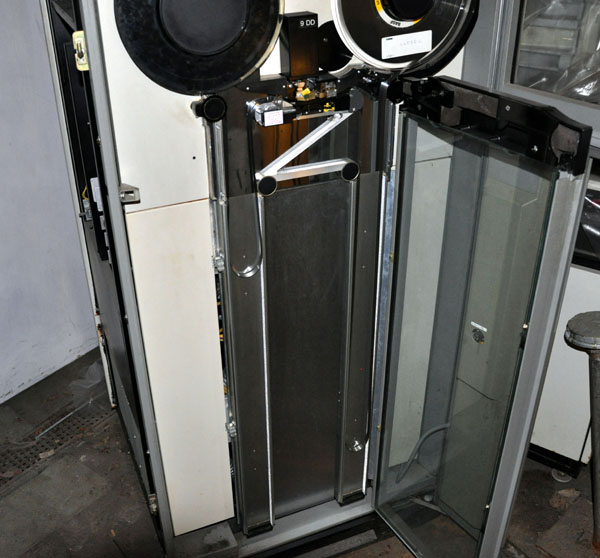
The tape was mounted on the right hub. The tape came from the feed reel and looped
into the right vacuum column. From there it went over the read/write head.
Next it wrapped over a perforated capstan behind which was a partial vacuum
holding it to the capstan. Next it looped into the left column being pulled down
by a partial vacuum. Finally it was wound on to the takeup reel.
Both the vacuum columns have holes near the top and the bottom.
When reading or writing the capstan moved just a short length of tape out of the right
column and the tape was sucked into the left column. The weight of tape moved was
just a fraction of a gram. In the time it took to accellerate up to recording speed
just 1/4 inch was moved. The electronics then transfered the data from the memory
and magnetised it on the tape. (In reading the electronics would read the data from
the tape and transferred it to the memory.) These tape movements were of the order of 6 inches.
(More about why later.)
Eventually the tape in the right hand column exposed the upper hole to the partial
vacuum and operate a vacuum switch that signalled the electric motor to turn the
right hand reel to feed magnetic tape that was sucked into the column. The reel
being heavy, about 1000 grams, was slow to get up to speed but then it could feed
tape faster than the capstan was pulling the tape out. Eventually the tape would loop
down the column until the lower hole was exposed to atmospheric pressure when a
vaccum switch signalled the motor to stop.
The similar pair of holes in the left hand column being exposed to the partial vacuum
controlled the left hand motor to wind tape out of the column onto the left reel.
Here is a photograph of the perforated capstan (and its mirror image) on the left
and the read/write head on the right,
Although the data was not electronically buffered the tape movement was physically buffered
from two massive slow to start and stop reels by the vacuum columns.